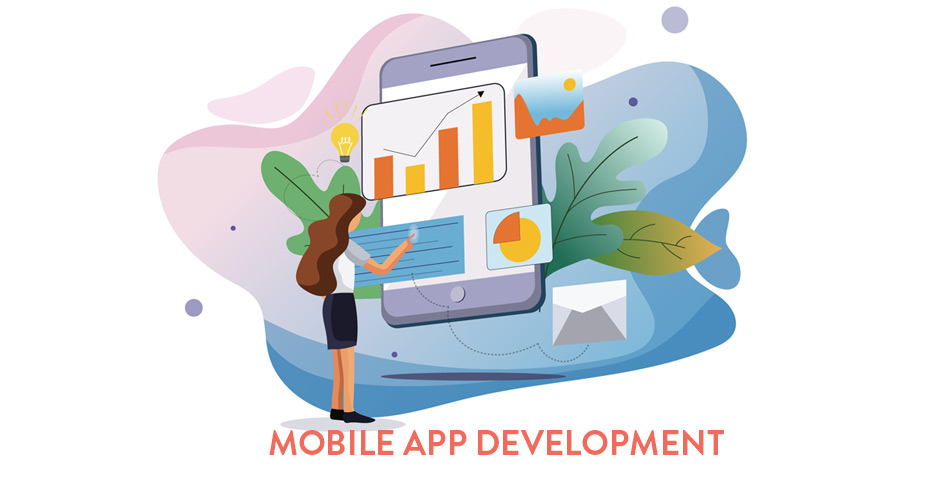Mobile app development is a significant part of a mobile ecosystem. Over the past few years, the app developer profession in IT has grown fast. The mobile app demand continues strengthening app development importance as a crucial factor in a global economy. After the success with smartphones, apps are actively conquering the next frontiers.
Daily life, as we know it, would be quite different without the smartphone in our pocket. A small device that offers a glimpse into the big world in a matter of seconds. From finding food delivery service and playing games to the stock exchange, each app provides a solution to our needs.
Since the first Nokia Snake game during the 90s, the apps have changed drastically over time. Despite the general notion that mobile apps are done and over, global statistics and market research show different information. According to market research, global mobile app revenues will surpass 571 billion euros by the end of 2021, via paid downloads and in-app advertising.
Moreover, tech giants have built their empires on app development. Keeping a fast pace with technology is no easy task. And yet, it is necessary to stay relevant and competitive on the market. The past year has been especially trialling due to a pandemic outbreak. During that time, the use of mobile apps within each household has skyrocketed. Of course, many businesses wonder if this surge is a consequence of the pandemics or a new way of life.
 Mobile App Development Current Scene
Mobile App Development Current Scene
In 2015 Google announced that mobile devices surpassed the desktop traffic for the very first time. People consciously substitute their computers for smaller size mobile phones. The tiny multi-purpose device keeps evolving with new technology, and sometimes we lose track of the latest phone models.
Since then, we live in a mobile world, and market demand increases as our lifestyle and interests take part in app development. It was transparent during the COVID-19 outbreak. The majority of the world was confined to indoor space, with an idle mind and a mobile device at hand. Based on our interests the app downloads increased within a year.
Google Play Store is one of the most trusted distribution platforms, which had 3739 app uploads daily in 2020 alone. The company charges a one-time registration fee of 20 euros. Hence, the development of apps is constantly increasing. Since 2017 the platform calculated that 724,000 app developers had released an app through Google Play.
On average, basic apps take about 35 hours to design and 400 hours to develop. Depending on built-in features and the location, they can cost thousands of euros. An average price of an app in the Play Store is 1.5 euros, excluding microtransactions within the software. Therefore the companies compete to achieve millions of downloads.
Increasing Market and Mobile App Demand
There are currently 3.3 billion smartphone users around the world. According to Statista (market data portal), the average user has approximately 30 apps on their mobile phone, which they use four hours a day.
Most of them use the Google Play Store that offers 2.87 million apps, making it a platform with the highest number of available apps. During the end of 2020, the number of total app downloads increased by seven per cent compared to the previous year. In other words, the Google Play Store had over 218 billion downloads.
Top App Downloading Countries in the World
For example, China is an ever-growing market with over 500,000 registered mobile app developers. Additionally, their devs upload almost 100 billion apps per year. This number creates an expectation that Chinese consumer spending on mobile apps is about to surpass 51 billion euros by 2022. The remarkable mobile app demand is registered in India that has tripled the app download in the last five years.
The European mobile app sales have risen by 31% compared to previous years. European consumers have the highest number of downloads in the UK, Germany, France, and Russia.
On the other side of the world, you would expect the US to lead the way in downloading the apps. However, western hemisphere showed a slight increase of 5% in comparison to the previous period. However, Brazilians have a growing interest of 40% in smartphone apps.
Trending App Market Categories at the Moment
The most talked about subject is the Google Play gaming category with a total of 51% improvement in downloads. As reported by Statista in January 2021, Moon Active was the leading game app publisher worldwide. The gaming company earned more than 85 million euros in mobile application revenues.
Many of the ongoing trends from other categories are remnants of pandemics isolation. Therefore, continuous downloads of widespread apps are still visible. As expected, the most popular is Zoom, with more than 300 million mobile app downloads. Designed for business communication, Zoom has become synonymous with the COVID-19 period.
Similarly, food ordering apps were an alternative for most of 2020. Within that interval, the flourishing take-out industry has recorded 128 billion sessions worldwide. Following closely behind are education, business, music, and entertainment categories.
Apart from the positive data, there is dissatisfaction amongst users in the global mobile app market. One of the principal reasons that cause 71% of application uninstalls is non-functioning apps. In other words, users show no tolerance for crashing software since there are a million others on the market to choose from. Similarly, performance speed is another important factor for worldwide buyers. For example, 43% of them are likely to remove an app if it takes longer than three seconds to load.
Application Development Trends and Future Of Mobile App Development
The current state of mobile app development reveals how innovations are altering peoples actions in the real world. Mobile apps have become a part of our daily lives, substituting radio and television consumption. Apps have overthrown the activities of physical shopping, dining at restaurants, and banking.
The future of mobile apps is well underway, although we don’t notice it. A few years back, mobile apps have become the biggest shopping mall in the world. Also, the omnipresence of the apps is moving towards smartwatches, mobile wallets, beacon technology, and integrating with AR.
For example, in 2018 Google released Maps AR which provides directions directly from the user’s camera in real-time. Thus, AR integration is expected to flourish in 2021, creating a seamless user experience.
50% of customers are looking for on-demand service tools tailored to their specific needs. Hence, chatbots are already a convenient way to extend customer engagement. Having that same intent the Starbucks goal was to develop the My Barista app to reduce customer’s serving time.
Following the app user’s experience, enabling the user to access the app without downloading it is another trend in the upcoming year. Instant apps are old news, but today they increase the company conversions by 20%.
Android devices have a global market share of 75% that will increase to grow. According to market research, it is expected to have a key role in European market growth. Nonetheless, the old continent will not be as lucrative as in East Asian countries.
Growing dependency on smartphones has expanded opportunities for IT industries. However, it seems the applications as we know them have changed into multi-purpose apps. Mobile apps are now a part of a wide range of industries. Due to their convenience and personalization, their use is a promising one. As key elements of a great user experience, there is never a dull moment in app development.

 Mobile App Development Current Scene
Mobile App Development Current Scene


